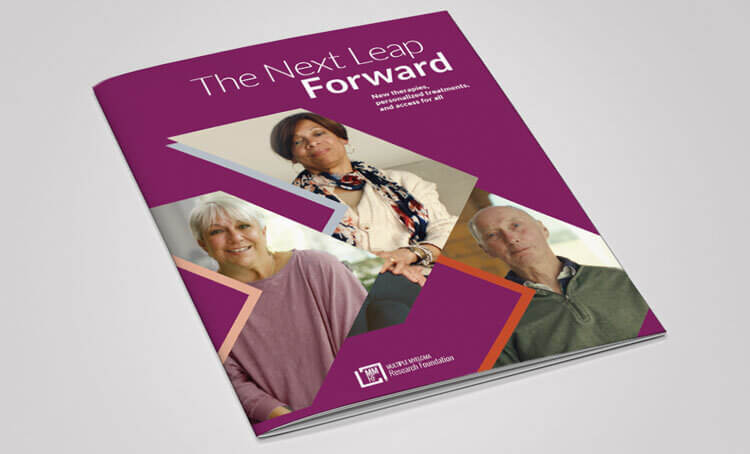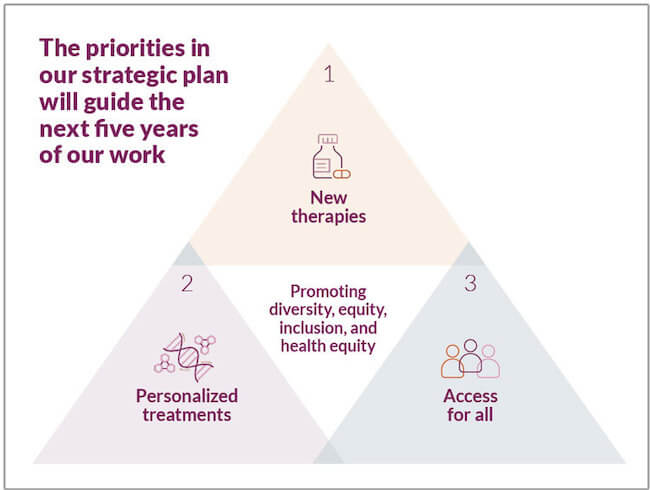Sharing your strategic plan: build engagement with communications
Strategic planning is a process that nonprofits embark on periodically (typically every few years) to develop clarity and alignment around what to set their sights on achieving. After months of deep thinking, stakeholder and community input, and careful planning, how can you make sure that the right amount of information about the strategic plan is delivered to the right people in the right format?
At Big Duck, we’ve found that a strategic plan can (and should) be more than just an internal planning document for staff and board. The information embedded into the plan can be important to share with your community proactively. Effectively communicating about your organization’s goals, priorities, and areas of investment builds trust and understanding, and can build relationships with program participants, donors, partners, and the community at large.
Here is a three-phase approach for preparing to communicate your nonprofit’s strategic plan with clarity and intentionality.
Phase 1: Determine the communications strategy around your strategic plan
Before you embark on sharing your nonprofit’s strategic plan with external audiences, it’s crucial to establish a well-thought-out communications strategy. Here’s how you can get started:
- Define your goals: Begin by outlining clear goals for your communication efforts. What do you want to achieve by sharing your strategic plan more widely? Consider gaining support and buy-in, being transparent, building trust, or attracting potential partners and donors.
- Identify key audiences: Pinpoint and prioritize your audiences. Through the planning process, you likely have already engaged a wide spectrum of stakeholders and community members. Beyond those you have already been involved as part of the planning process, consider current and prospective donors, volunteers, community members, partners, and other stakeholders. Understanding their needs and expectations will help tailor your approach effectively.
- Determine your approach: Decide which strategies, channels, activities, and tools will be most effective and relevant in communicating your strategic plan to your audiences. For example…
-
- Will you post your strategic plan publicly on your website?
- Will you hold a webinar or town hall event dedicated to sharing your strategic plan and inviting your community to ask questions?
- Will you build an engagement campaign around it with its own identity and suite of materials across your communications channels?
- Will you develop a new case for support for donors that includes the content and priorities embedded into the strategic plan?
- Will you develop talking points about your strategic plan that leadership can use when communicating about the organization’s strategic direction?
-
Phase 2: Create assets for public consumption
With a defined communication strategy in place for your strategic plan, it’s time to create assets that will convey your nonprofit’s strategic plan effectively. The kinds of assets you need will depend on the strategies and channels you select as part of Phase 1. For example…
- For a webinar or Town Hall event introducing your strategic plan to your community, you may need an engaging, informative, set of slides that covers the key points of the strategic plan.
- If you are using the strategic plan to raise funds with donors, you might need a designed case statement brochure that details what investments are needed to advance the goals and priorities in the plan.


- When developing assets, we recommend taking into consideration the actual structure and format of the plan itself so your audience can easily engage with the information. We restructured a former client’s strategic plan, simplifying and reorganizing the content around five clear themes. What started as a lengthy and detailed Word document, became a tool more suitable for public dissemination. It’s also more memorable and easier to read and talk about.
Phase 3: Roll out the strategic plan
Now that your strategy is clear and communication assets are ready, it’s time to execute the rollout of your nonprofit’s strategic plan. Start by developing a timeline for rollout to map out all the actions and ensure communicating about the strategic plan is integrated into your planned internal and external communications calendar. We typically do not recommend a ‘big splash’ moment for your strategic plan or generating a lot of “buzz” unless it is tied to a major programmatic announcement. Instead, we recommend rolling out your strategic plan through a series of ongoing, targeted communications embedded into your content and focused on the specific needs and motivations of different audiences.
Communicating publicly about your nonprofit’s strategic plan is a helpful step in building support, trust, and engagement with your community. After the hard and intentional work of strategic planning is complete, embrace a spirit of transparency by sharing your organization’s intentions with your community.




